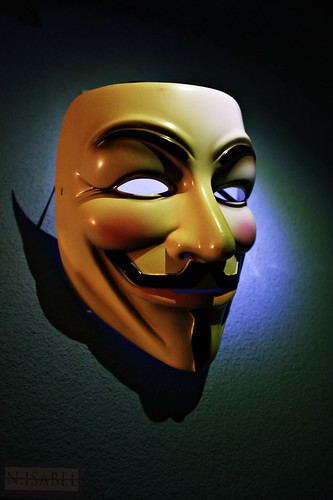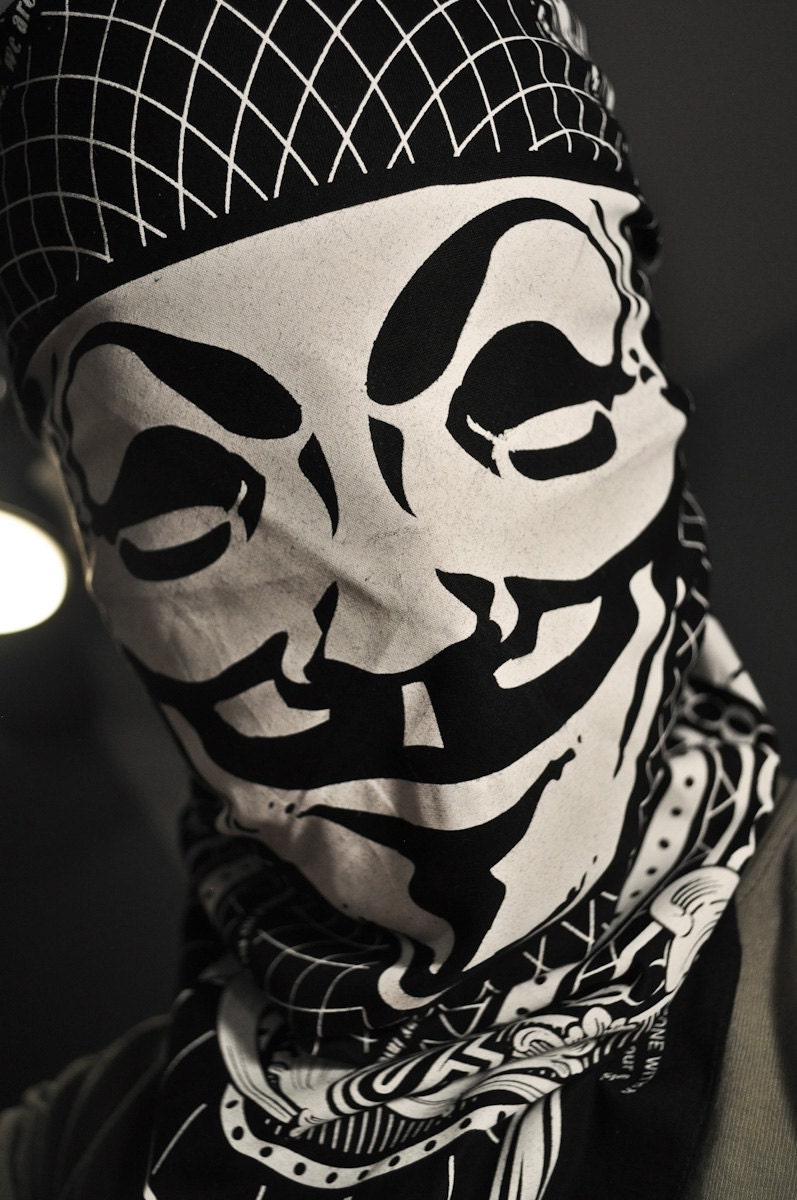Doesn't ring a bell? Well, let's walk this through a bit.
 |
| Guy Fawkes on a powder keg |
First, who's Guy (Guido) Fawkes? He's noted as the ringleader of a failed Catholic attempt to blow-up Parliament in protest of anti-Catholicism. According to a site dedicated to him:
After Queen Elizabeth I died in 1603, English Catholics who had been persecuted under her rule had hoped that her successor, James I, would be more tolerant of their religion. James I had, after all, had a Catholic mother. Unfortunately, James did not turn out to be more tolerant than Elizabeth and a number of young men, 13 to be exact, decided that violent action was the answer.
Indeed, the thing to do was to blow up the Houses of Parliament. In doing so, they would kill the King.
To carry out their plan, the conspirators got hold of 36 barrels of gunpowder - and stored them in a cellar, just under the House of Lords.
But as the group worked on the plot, it became clear that innocent people would be hurt or killed in the attack, including some people who even fought for more rights for Catholics.
[To protect the innocent, a warning went out to innocent sympathizers and Catholics].The warning letter reached the King, and the King's forces made plans to stop the conspirators.
Guy Fawkes, who was in the cellar of the parliament with the 36 barrels of gunpowder when the authorities stormed it in the early hours of November 5th, was caught, tortured and executed.
Even for the period which was notoriously unstable, the Gunpowder Plot struck a very profound chord for the people of England. In fact, even today, the reigning monarch only enters the Parliament once a year, on what is called "the State Opening of Parliament". Prior to the Opening, and according to custom, the Yeomen of the Guard search the cellars of the Palace of Westminster.
On the very night that the Gunpowder Plot was foiled, on November 5th, 1605, bonfires were set alight to celebrate the safety of the King. Since then, November 5th has become known as Bonfire Night. The event is commemorated every year with fireworks and burning effigies of Guy Fawkes on a bonfire.
Some of the English have been known to wonder, in a tongue in cheek kind of way, whether they are celebrating Fawkes' execution or honoring his attempt to do away with the government.
A few things that we still owe to "Guy Fawkes" day:
First, when you hear of terms like "guys night out", that's due to Fawkes! As the custom of celebrating "Guy Fawkes Day" took on in England, there were broad new comic effigies of Fawkes being burned in the streets or in bonfires. These were called "guys". Later, the term became slang in England for man who was deemed odd or strange. As the term came to the US, it was softened to mean "an ordinary, non-remarkable man" or "a regular guy".
Second, Fawkes face has been depicted in a grotesque leering countenance and has been made famous by the movie, "V for Vendetta" which was based on the great comic graphic novel of the same name. In the novel and the movie, there wasn't a connection of Catholicism with the protagonist as much as a sense of anarchy against oppressive governments, religions and corporations in a dystopia that quelled humanity of basic rights and dignities.
Which takes us to 2011. The image of Fawkes' face is now on some garb worn by the OCCUPY movement. Which you can buy to protest capitalism! So, tadah, totally relevant!
But for most of the OCCUPY folks (and anarchists everywhere), Guy Fawkes represents anarchy and revolt. To Catholics, he's not just a revolutionary, he was one fed up Catholic. Not necessarily using saintly means to make his point but he was one of us and his heart was in defending the faith.
I guess he was sincere but a bit...wait for it...
mis-GUY-ded.
HAHAHHAAHHAHA...hahahaha..ha.....umm.
To carry out their plan, the conspirators got hold of 36 barrels of gunpowder - and stored them in a cellar, just under the House of Lords.
But as the group worked on the plot, it became clear that innocent people would be hurt or killed in the attack, including some people who even fought for more rights for Catholics.
[To protect the innocent, a warning went out to innocent sympathizers and Catholics].The warning letter reached the King, and the King's forces made plans to stop the conspirators.
Guy Fawkes, who was in the cellar of the parliament with the 36 barrels of gunpowder when the authorities stormed it in the early hours of November 5th, was caught, tortured and executed.
Even for the period which was notoriously unstable, the Gunpowder Plot struck a very profound chord for the people of England. In fact, even today, the reigning monarch only enters the Parliament once a year, on what is called "the State Opening of Parliament". Prior to the Opening, and according to custom, the Yeomen of the Guard search the cellars of the Palace of Westminster.
 |
| The conspirators of the Gunpowder Plot |
Some of the English have been known to wonder, in a tongue in cheek kind of way, whether they are celebrating Fawkes' execution or honoring his attempt to do away with the government.
 |
| Guy Fawkes mask |
First, when you hear of terms like "guys night out", that's due to Fawkes! As the custom of celebrating "Guy Fawkes Day" took on in England, there were broad new comic effigies of Fawkes being burned in the streets or in bonfires. These were called "guys". Later, the term became slang in England for man who was deemed odd or strange. As the term came to the US, it was softened to mean "an ordinary, non-remarkable man" or "a regular guy".
 |
| Scene from the movie, "V for Vendetta" |
 |
| Occupy Wall Street Guy Fawkes Bandana |
Which takes us to 2011. The image of Fawkes' face is now on some garb worn by the OCCUPY movement. Which you can buy to protest capitalism! So, tadah, totally relevant!
But for most of the OCCUPY folks (and anarchists everywhere), Guy Fawkes represents anarchy and revolt. To Catholics, he's not just a revolutionary, he was one fed up Catholic. Not necessarily using saintly means to make his point but he was one of us and his heart was in defending the faith.
I guess he was sincere but a bit...wait for it...
mis-GUY-ded.
HAHAHHAAHHAHA...hahahaha..ha.....umm.
